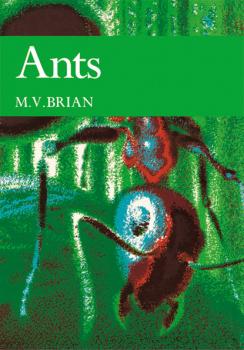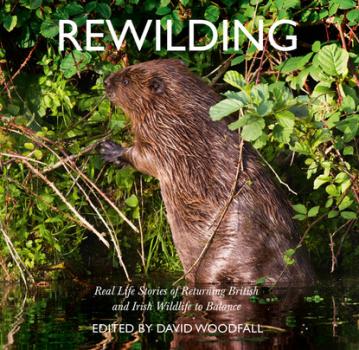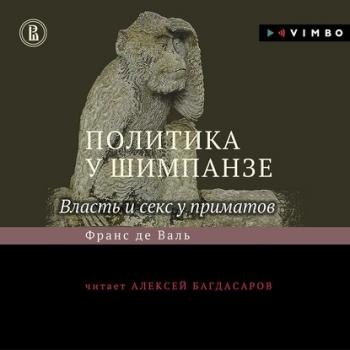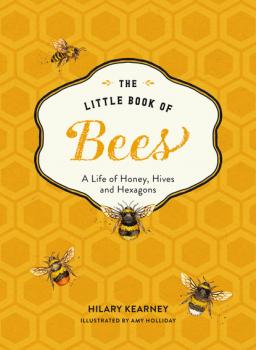ТОП просматриваемых книг сайта:
Биология
Различные книги в жанре Биология, доступные для чтения и скачиванияАннотация
A comprehensive account of the seal’s migratory patterns, methods of hunting and patterns of reproduction.While seals are a perennial favourite among visitors to zoos for their playful and engaging behaviour, less is known about their actions in natural habitats. Based on extensive field observations, this thoroughly illustrated volume in The New Naturalist Series is one of the most authoritative studies of its kind. The late Professor Hewer shows how recent discoveries for determining the age of seals have greatly contributed to research in the subject and he presents a comprehensive account of the seal’s migratory patterns, methods of hunting for food, movements and patterns of reproduction. As the large colonies of seals indigenous to British waters constitute and important segment of the world’s seal population, Professor Hewer’s findings will be helpful to all interested in seal behaviour, and conservation.Professor Hewer researched seal behaviour for over twenty years, did extensive field work in seals and published several articles on his findings. He was Emeritus Professor at the University of London and served with the British government’s Ministry of Agriculture and Ministry of Food.
Аннотация
Mammals in the British Isles looks at the influences on their numbers and distribution, both now and in the past, examines aspects of their biology with emphasis on function and physiology, and concludes with an account of relationships with man.This book by Dr Harrison Matthews will be warmly welcomed by all those for whom his British Mammals, in this series, was a standard work for nearly 30 years. In recent years our understanding of the British species has expanded greatly. This volume offers a synthesis of modern knowledge derived from living animals studied in the field and covering all facets of mammalian life in the British Isles. It will be as important to a new generation of naturalists as the previous book was to an older one.The book is full of fascinating detail – of the shrews which scream in defence of territory to avoid fighting; of young rats that play to learn while adult otters play for fun; of vole 'plague' populations which crash as a result of stress; of monogamy and parental care of the dog fox – but it also paints a broader picture of interdependence, conservation and the part played by man.As much a part of nature as any other member of the fauna, it is man who has created the character of the environment – by clearing, draining, building and developing agriculture – and made available the wide variety of habitats occupied by indigenous, introduced and feral populations.Dr Harrison Matthews gives a general account of British mammals and the things influencing their numbers and distribution both now and in the past, examines aspects of their biology with emphasis on function and physiology, and concludes with an account of relationships with man and the measures he has taken for their control and conservation.
Аннотация
Ants should provide both the amateur naturalist and the professional zoologist with a valuable source of reference, and a fascinating account of the lives of an intriguing group of insects.Ants have always exercised a fascination that extends beyond the world of biology. They have attracted the attention of poets and dramatists, and also of those philosophers and political theorists who have envied their apparent industry and rigid and complex communal organisation. The social life of ants is indeed extraordinary. It forms the basis of their entire lives; an ant on its own has no chance of survival. Ants are the only group of insects in which there are no solitary species at all.In this book Dr Brian, the country's leading authority on ants, brings together the results of recent research (much of it his own) into the zoology, ecology and social life of the group. Dr Brian begins by discussing the relationship of ants to other insects, their anatomy and physiology, and then turns to the different species of British ant (with an identification key), feeding, including aphid 'farming' and the specialised role of the workers in acting as travelling food containers for the nest itself, the rearing of the young and the different caste systems (including the life history of the queen), the ecological significance of ants, and the role they play in the lives of other animals. Particular attention is paid to the importance of communication in the ant society, and there is a complete section of distribution maps – one for each of the 47 British Species – compiled according to the latest available data. There are 16 plates of black and white photographs and two colour plates of ant species specially painted for this volume by Gordon Riley.This book should provide both the amateur naturalist and the professional zoologist with a valuable source of reference, and a fascinating account of the lives of an intriguing group of insects.
Аннотация
A hopeful yet practical collection of essays exploring the many opportunities and benefits of rewilding and how to get involved today. Highly illustrated with nature photography tracing landscape change over thousands of years. Rewilding has become the key talking point in the modern conservation movement. But it’s commonly misunderstood as a campaign to fill the forests with lynxes, wolves and bears, when in fact the ethos guiding the British rewilding movement is much more nuanced, and much broader in scope. It’s also much more complicated, requiring an in-depth understanding of the complexity of regional ecosystems.Naturalist and photographer David Woodfall has spent years canvassing converts actually working in the countryside, meeting the people on the frontline of rewilding and collecting their stories. The result is a passionate chorus of voices from all facets of the movement. More than 50 contributors share stories of successful examples like the Knepp and Alladale estates, of unique species like the North Atlantic Salmon under threat, of the essential NGOs and trusts, of government agencies and policies, and so much more. Illustrated with Woodfall’s stunning nature photography, Rewilding offers at once an in-depth understanding of an essential movement and the people leading it; and of British ecosystems in all their terribly fragility and intricate beauty.
Аннотация
Что отличает человека от обезьяны? Меньше, чем многим бы хотелось. И уж точно не только люди умеют бороться за власть. В 1970-х годах тогда еще молодой ученый Франс де Валь исследовал одну из крупнейших в мире колоний шимпанзе, живущих под открытым небом в зоопарке Арнема в Нидерландах. И выяснил, что обезьяны способны вести себя так, словно читали Макиавелли! Первое издание книги было хорошо встречено не только за ее научные достижения, но также за глубокое понимание самых базовых человеческих потребностей и поведения. Четверть века и множество переизданий спустя эта книга стала считаться классикой. Де Валь погружает читателя в остросюжетный мир интриг среди высших приматов. Описывая соперничество и создание коалиций, для которых нужен интеллект, а не инстинкты, де Валь напоминает нам, что корни политики гораздо старше человека. Исполнитель: Алексей Багдасаров Переводчик: Дмитрий Кралечкин © Frans de Waal, 2007 © Издательский дом Высшей школы экономики, перевод на рус. яз., 2019 Запись произведена Аудио Издательством ВИМБО ©&℗ ООО «Вимбо», 2020 Продюсеры: Вадим Бух, Михаил Литваков
Аннотация
Написать книгу, посвященную нейробиологии поведения, профессора Дубынина побудил успех его курса лекций «Мозг и потребности».
Биологические потребности – основа основ нашей психической деятельности. Постоянно сменяя друг друга, они подталкивают человека совершать те или иные поступки, ставить цели и достигать их. Мотиваторы как сиюминутных, так и долгосрочных планов каждого из нас, биологические потребности движут экономику, науку, искусство и в конечном счете историю.
Раскрывая темы книги: голод и любопытство, страх и агрессия, любовь и забота о потомстве, стремление лидировать, свобода, радость движений, – автор ставит своей целью приблизить читателя к пониманию собственного мозга и организма, рассказывает, как стать умелым пользователем заложенных в нас природой механизмов и программ нервной системы, чтобы проявить и реализовать личную одаренность.
Вы узнаете:
• Про витальные, зоосоциальные и потребности саморазвития человека.
• Что новая информация для нашего мозга – это отдельный источник положительных эмоций.
• Как маркетологи, политики и религиозные деятели манипулируют нами с помощью страха. Поймете, как расшифровывать такие подсознательные воздействия.
Аннотация
Bees continue to fascinate and charm us all – from novice gardeners and nature-lovers to dedicated environmentalists – and today, bees need our help more than ever. Discover the story of these incredible creatures, with The Little Book of Bees.Bees first appeared on Earth an incredible 130 million years ago. Since the time of the dinosaurs, evolution has taken our beloved bees on an incredible journey – and today, there are 20,000 species on the planet.The Little Book of Bees is a lovely, informative book of all things bee – from evolution and communication, to honey, beekeeping, and saving the bees – all in a beautifully illustrated gift book.contents Chapter One: The Story of Bees The Evolution of the Bee · The Bee Life Cycle · The Bee Family Tree · Bee Anatomy · Bee Nesting Behaviours · Bee Factoids • Chapter Two: Superorganisms Sociality in Bees · Bumble Bees · Honey Bees · Stingless Bees • Chapter Three: Honey What is Honey? · Types of Honey · Practical Uses for Honey · Honey Healthcare • Chapter Four: Beekeeping Why Keep Bees? · An Introduction to Beekeeping · Keeping Stingless Bees • Chapter Five: Protecting Our Bee Buddies Why Are Bees in Decline? · Supporting Our Bees in 10 Easy Steps · Providing a Home for Bees
Аннотация
Cave exploration has uncovered archaeological finds which have enhanced our understanding of human evolution, and fossil remains, such as woolly mammoths, which reveal something of the Pleistocene animal world. But perhaps most fascinating of all is the living natural history of caves.There are few unexplored places on earth, but caves still offer countless opportunities for discovery. From new passages to whole new cave systems, significant finds are still being made – recent exploration in South Wales revealed Britain's largest passageways.Caves are formed over many thousands of years, as subterranean waters seep slowly through the crevices of the buckled and twisted laters of limestone rocks. These cracks develop into fantastically shaped passages which stretch for miles, huge caverns housing vast, still lakes and deep potholes through which icy waterfalls tumble. Within them form arrays of stalactites and stalagmites, delicately twirling helictites, slender pillars of calcite and crystal pools. And it is these wonders that have encourages the adventurers who have explored and charted this underground world – descending on ropes into gaping pits, crawling and digging their way along tunnels and diving through freezing torrents to do so.Cave exploration has uncovered archaeological finds which have enhanced our understanding of human evolution, and fossil remains, such as woolly mammoths, which reveal something of the Pleistocene animal world. But perhaps most fascinating of all is the living natural history of caves.The study of cave biology is still in its infancy. Speculation and controversy abound, cavernicolous communities remain under-recorded and new species await discovery in most subterranean habitats. But in this book, Philip Chapman has drawn together his expert knowledge of caves and cave life to present an outstanding and cohesive account of what is now known in this extraordinary world, which for so many has remained unknown for so long.
Аннотация
Here is a fascinating and authoritative survey of the complex inter-relationships of bird and human life in this country.Here is a fascinating and authoritative survey of the complex interrelationships of bird and human life in this country.Dr. Murton begins with an entire outline of the earliest evidence of the impact of birds on man, and vice versa and of the ecological considerations involved. He then proceeds to describe in detail how men and birds affect each other in these islands – in food production, farming, forestry, horticulture, fishery, urban conditions and hygiene, sport and industry. He concludes with an account of the conservation issues involved – the need to preserve unique habitats and to protect bird life, beside the demands of crop protection and control of 'problem birds'.It is a book which anyone interest in either our birds or our environment will find of absorbing interest.
Аннотация
Do you speak to your cat? Do you feel your cat understands you and vice versa?Suitable for tablets. Some special characters may not display correctly on older devices.We recommend that you download a sample and check the ‘Note to the Reader’ page before purchase.Cat lovers across the globe know cats can speak. In this compelling new book, Susanne Schotz – a professor at Sweden’s Lund University – shares insights into her long-standing cat communication research. Proving that cats not only speak to one another, but also to their human caretakers.This clever book teaches us how to better understand our cats by translating their sounds, recognising their meaning in different situations and giving practical tips to understand them better.Unlocking the cat code, this crash course in cat phonetics is the perfect gift for cat-lovers everywhere.










